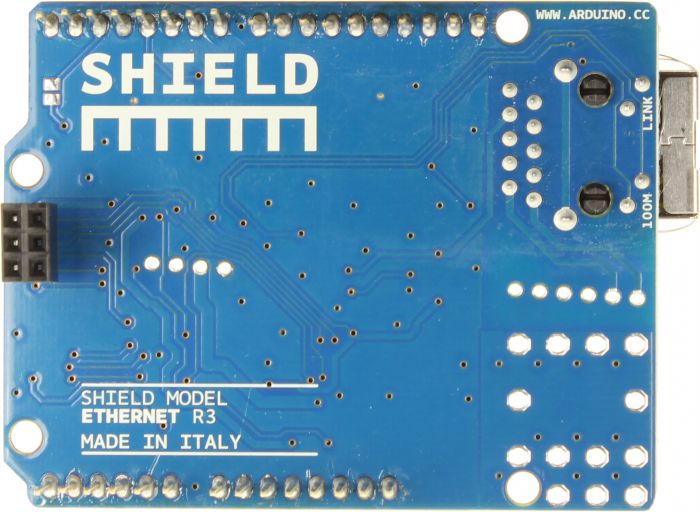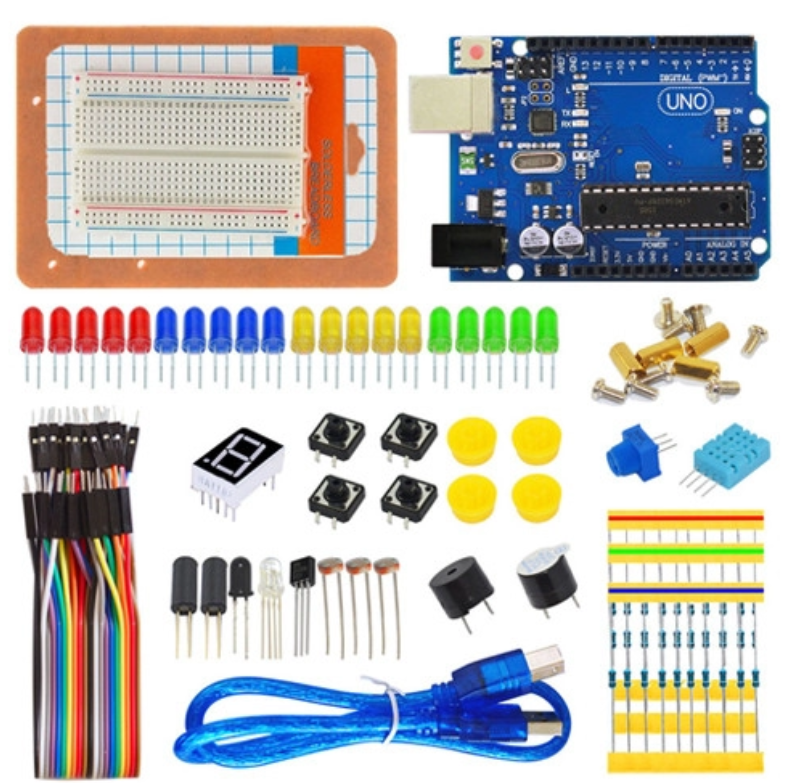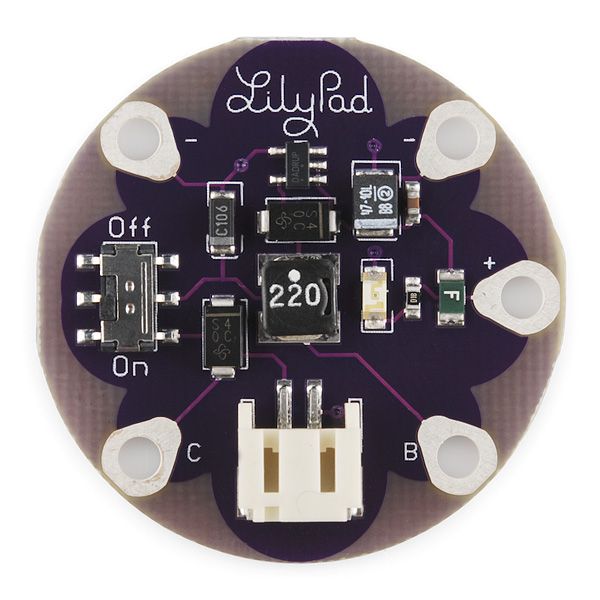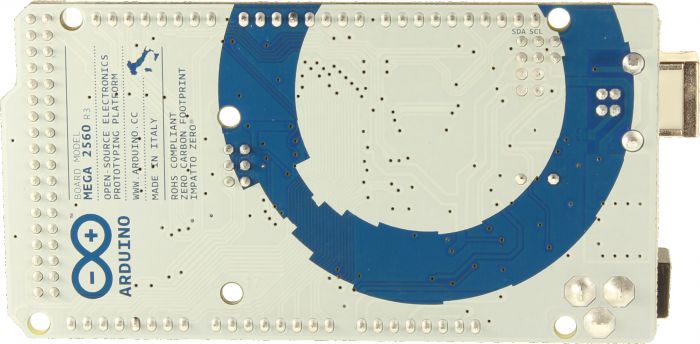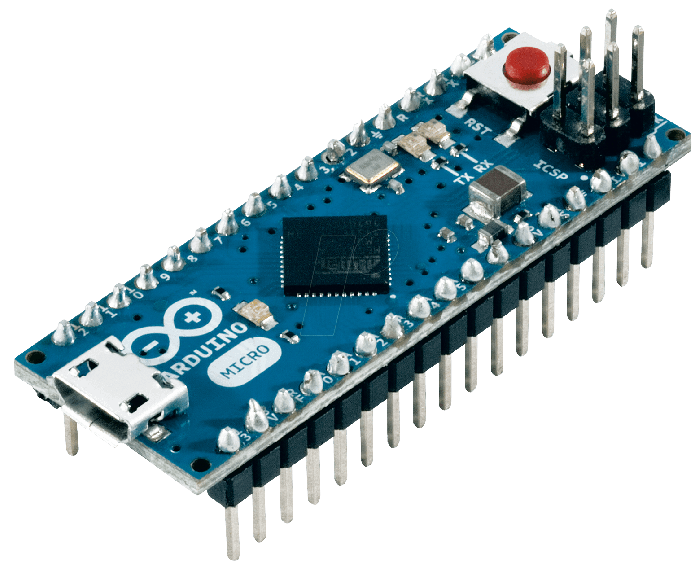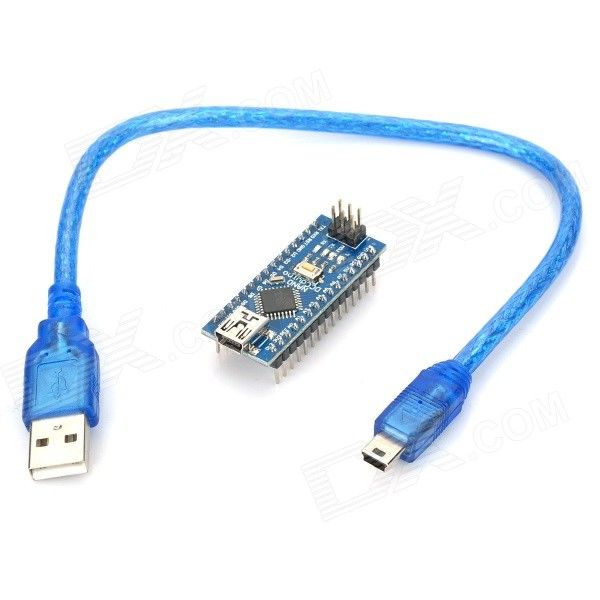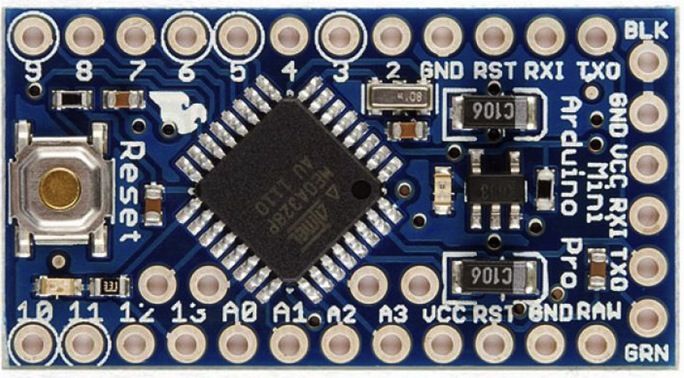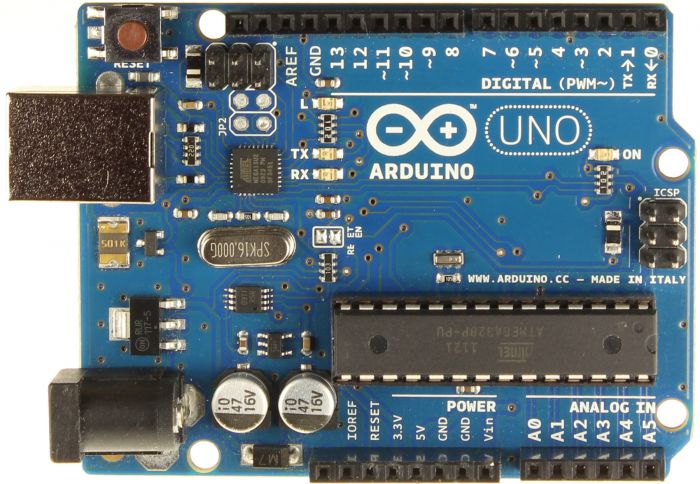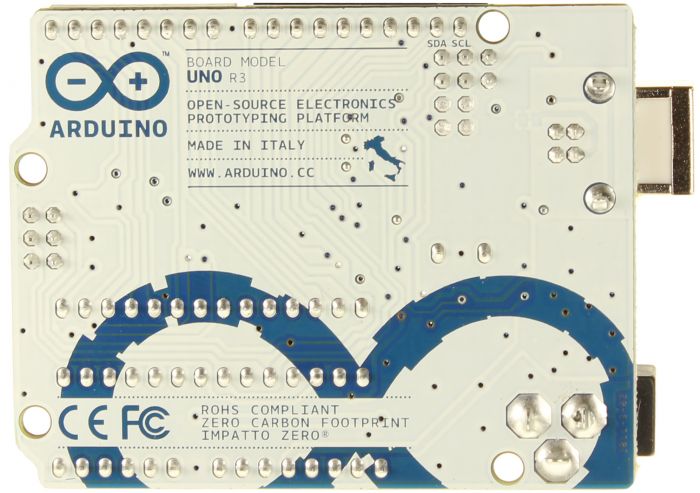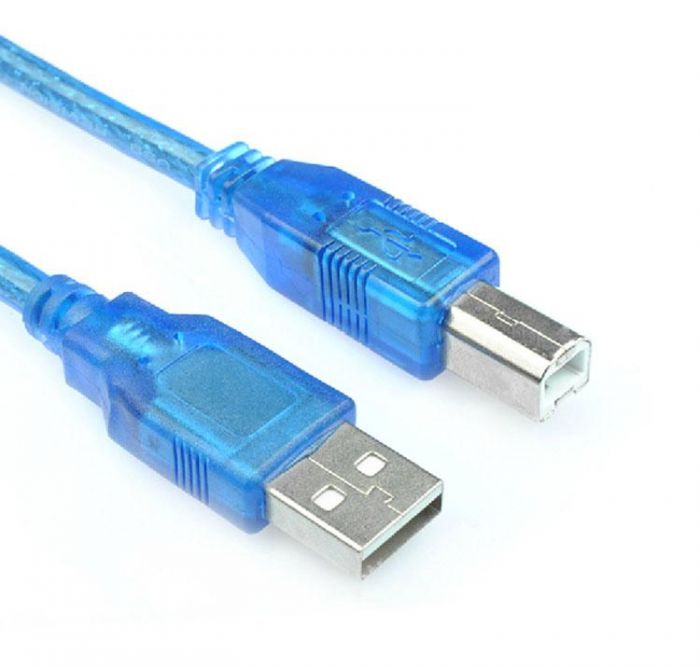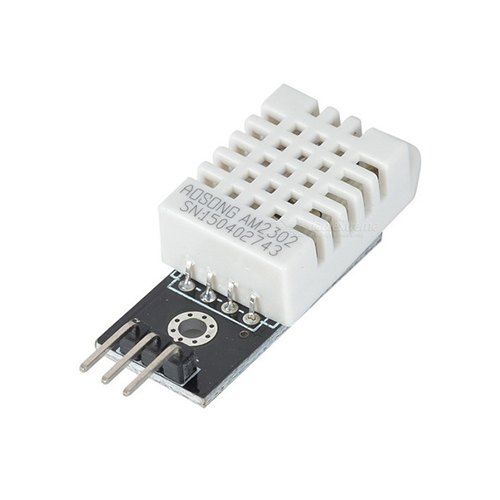Arduino
-
Arduino Ethernet Shield R3 (Clone)
$19.62The Arduino Ethernet Shield connects your Arduino to the internet in mere minutes. Just plug this module onto your Arduino board, connect it to your network with an RJ45 cable (not included) and follow a few simple instructions to start controlling your world through the internet. As always with Arduino, every element of the platform – hardware, software and documentation – is freely available and open-source. This means you can learn exactly how it’s made and use its design as the starting point for your own circuits. Hundreds of thousands of Arduino boards are already fueling people’s creativity all over the world, everyday. Join us now, Arduino is you!
-
Arduino Hobby Kit
$27.25The Arduino Hobby Kit is a complete starter kit for beginners to learn and get started with Arduino programming. It includes various components such as a breadboard, LEDs, buttons, resistors, sensors, and more, along with an instruction manual to help build different projects. This kit is compatible with the Arduino UNO board and provides a hands-on learning experience for those interested in electronics and robotics.
-
Arduino LilyPad LiPower (Clone)
$15.26Arduino LilyPad LiPower (Clone) is a wearable microcontroller board designed for e-textile projects and wearable technology. It features an ATmega328P microcontroller and operates at 8 MHz with 32KB of flash memory. It has 14 digital input/output pins and 8 analog input pins. The board is designed to be powered by a Li-Polymer battery and features a voltage regulator to ensure stable power supply to the microcontroller. The board has a compact and washable design, making it suitable for use in wearable and e-textile projects.
-
Arduino Mega 2560 R3 Board with Free USB Cable (Clone)
$39.24The Arduino Mega 2560 R3 Board is a microcontroller board based on the ATmega2560 chip. This board is compatible with the Arduino programming environment and has a total of 54 digital input/output pins, 16 analog inputs, 4 UARTs (hardware serial ports), a 16 MHz quartz crystal, a USB connection, and a power jack. The Arduino Mega 2560 R3 Board is ideal for larger projects that require more I/O pins and memory than the smaller Arduino boards. This version is a clone of the original Arduino Mega 2560 R3 Board, and it comes with a free USB cable for programming and power.
-
Arduino Micro (Clone)
$20.71Arduino Micro development board based on the ATmega32u4 microcontroller. The ATmega32u4 is a 8bit AVR RISC based microcontroller featuring 32KB flash memory, 2.5KB SRAM, 1KB EEPROM, USB 2.0 full speed/low speed device, 10bit A to D converter and JTAG interface for on chip debug. The board contains everything needed to support the microcontroller, simply connect it to a computer with a micro USB cable to get started. It has a form factor that enables it to be easily placed on a breadboard. The Micro is similar to the Arduino Leonardo in that the ATmega32u4 has built in USB communication, eliminating the need for a secondary processor. This allows the Micro to appear to a connected computer as a mouse and keyboard, in addition to a virtual (CDC) serial/COM port.
-
Arduino Mini USB Cable for Nano (50 cm)
$3.27The Arduino Mini USB Cable for Nano (50 cm) is a type of USB cable designed specifically for the Arduino Nano microcontroller board. It has a mini USB connector on one end and a standard USB connector on the other, allowing it to be connected to a computer or other USB device. The cable is 50 cm in length, providing ample reach for most projects and applications. It is made of high-quality materials and is designed to provide a stable and reliable connection between the Arduino Nano and the USB device.
-
Arduino Nano v3 with free USB cable (Clone)
$16.35Arduino Nano v3 (Clone) is a compact, breadboard-friendly version of the Arduino microcontroller board. It features an ATmega328P microcontroller and operates at 16 MHz with 32KB of flash memory, 2KB of SRAM, and 1KB of EEPROM. It has 14 digital input/output pins and 8 analog input pins. The board can be powered through the USB connection or an external power supply. The package includes a free USB cable for connecting the board to a computer for programming and power supply.
-
Arduino Pro Mini (Clone)
$8.72The Arduino Pro Mini is a compact, low-power microcontroller board based on the ATmega328P chip. It is designed for projects that require a smaller form factor or a low power consumption, as it only has 14 digital input/output pins, 8 analog inputs, a 16 MHz quartz crystal, and a mini USB connection for programming. This is a clone of the original Arduino Pro Mini, which means that it is a less expensive alternative that still has the same basic functionality as the original. Note that this board does not come with a USB connection, so you will need an external USB to serial converter to program it.
-
Arduino UNO R3 Board with Free USB Cable (Clone)
$26.16The Arduino UNO R3 Board is a clone version of the popular open-source microcontroller board based on the ATmega328P. It comes with a free USB cable and features 14 digital input/output pins, 6 analog inputs, a 16 MHz quartz crystal, and a micro-USB connection for programming. This board is suitable for beginners and advanced users who want to control a wide range of devices with their own software.
-
Arduino USB Cable for UNO and Mega (50 cm)
$3.27The Arduino USB Cable for UNO and Mega (50 cm) is a type of USB cable designed specifically for the Arduino UNO and Mega microcontroller boards. It has a standard USB connector on one end and a type B USB connector on the other, allowing it to be connected to a computer or other USB device.
The cable is 50 cm in length, providing ample reach for most projects and applications. It is made of high-quality materials and is designed to provide a stable and reliable connection between the Arduino UNO or Mega and the USB device.
-
DHT11 Temperature and Humidity Sensor Module
$8.72The DHT11 temperature and humidity sensor module is an electronic device used to measure the temperature and humidity of a surrounding environment. The module uses a combined digital temperature and humidity sensor that measures both parameters using a single device.
The DHT11 sensor module is designed to interface with microcontroller boards, such as the popular Arduino platform, and typically contains the DHT11 sensor and a few other electronic components that allow it to communicate with the microcontroller.
-
DHT22 Temperature and Humidity Sensor Module
$17.44DHT22 is a basic, low-cost digital temperature and humidity sensor. It uses a capacitive humidity sensor and a thermistor to measure the surrounding air, and spits out a digital signal on the data pin (no analog input pins needed). It’s fairly simple to use, but requires careful timing to grab data. The only real downside of this sensor is you can only get new data from it once every 2 seconds, so when using our library, sensor readings can be up to 2 seconds old.



